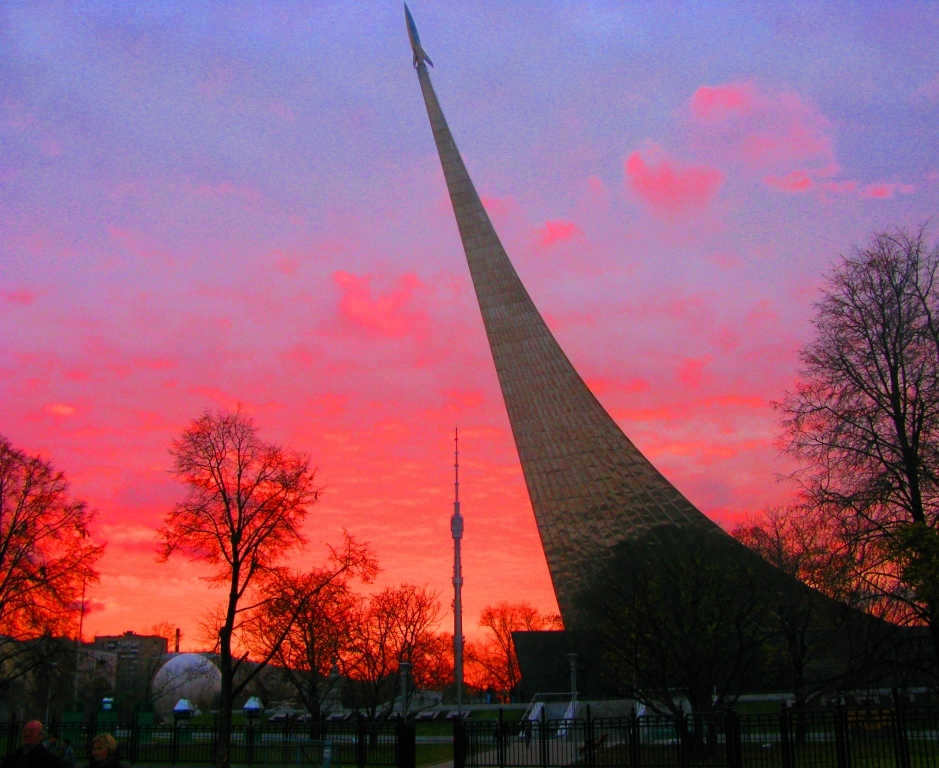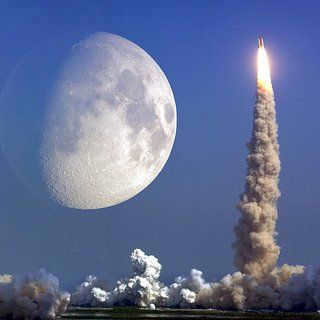
For a considerable period, humanity’s endeavors to investigate the Moon were constrained to visual observation using optical equipment. In 1959, a new phase in the exploration of Earth’s natural satellite commenced with the successful landing of the Soviet automated station Luna-2. A decade later, American astronaut Neil Armstrong took his first steps on the Moon. Subsequently, Russia, the United States, and China, the leading space powers, have been engaged in a continuous competition to advance lunar exploration. “Lenta.ru” provides insights into these countries’ upcoming plans and their actualization.
Complete Automation
“What triggered the onset of the second race to the moon? If our goal is to explore distant planets, then we must first test numerous long-distance space technologies on the moon. It is within close proximity to us, making it an ideal testing ground for various experiments,” explained Alexander Sergeyev, a member of the Russian Academy of Sciences (RAS), when discussing the importance of lunar conquest in 2021.
Russia is currently focused on the development of the Luna-25 Automated Interplanetary Station (AIS) as its primary lunar project. This program involves the creation of a next-generation spacecraft and the advancement of nuclear space power technologies. The mission’s objective is to deploy an automated probe for extensive research in the South Pole region of the moon.
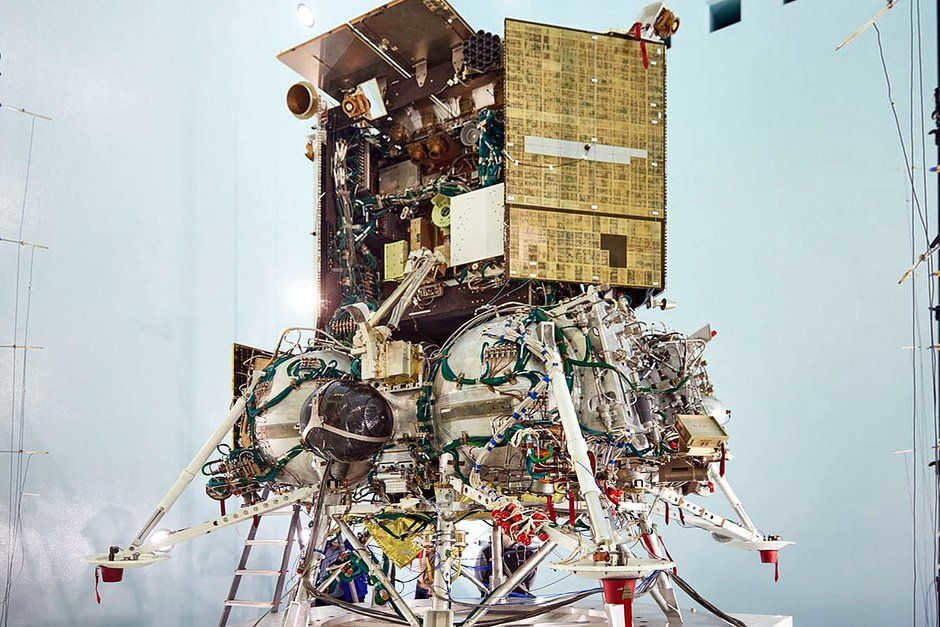
The satellite’s orbital component will conduct remote research and search for suitable landing sites for future spacecraft. The landing component is also designed for surface exploration and cryogenic drilling up to a depth of two meters. The primary objective of this device is to locate water. It is anticipated that the automated probe will operate on the Moon for a minimum of one Earth year.
Roscosmos has announced the launch of the inaugural Luna-25 spacecraft on July 13, 2023. The module is expected to touch down near the Boguslavsky crater.
A number of other missions are scheduled to begin in 2027-2028: Luna-26 (orbital) and Luna-27 (landing), Luna-28. The development of the initial spacecraft will commence prior to 2024, and the total cost (as per the state contract) amounts to 9.3 billion rubles, with a contract price of 7.2 billion rubles for the landing vehicle. The ultimate phase will be the mission of Luna-28, which will transport samples of regolith back to Earth.
Currently, the program to land Russian cosmonauts on the Moon is undergoing coordination with authorities and is expected to be carried out within a span of ten years.
By 2030, we will have the necessary technological capabilities to successfully land Russian cosmonauts on the Moon.
The technical development of the Luna-25 project station has already been completed and it is fully operational. However, the software is still undergoing finalization by experts from the Lavochkin NPO.
Furthermore, there are also other ongoing preparations for the development of the Moon. One notable example is Russia’s participation in the SIRIUS (Scientific International Research In Unique Terrestrial Station) international experiment, which aims to simulate a journey to the moon. This program consists of four phases, each involving different levels of social isolation lasting for 17, 120, 240, and 360 days, respectively.
The most recent phase concluded in July 2022. During this time, a team of three women and three men from Russia, the United States, and the UAE underwent an eight-month isolation period in a spacecraft simulator at the Institute of Medical and Biological Problems (IMBP) of the Russian Academy of Sciences. The tests emulated various stages of the lunar journey, including “entering Earth orbit,” “traveling to the Moon’s orbit” aboard an interplanetary complex, and “landing on the lunar surface.”
Furthermore, progress is being made in designing various living arrangements for the initial staff of the lunar station. This entails developing technology for extracting water, devising radiation shielding for astronauts, and addressing other logistical challenges. For instance, experts propose the construction of “dugouts” using regolith as a means of protecting against radiation on the Moon’s surface.
Sergey Krikalev, the executive director of Roscosmos for manned programs, believes that utilizing local resources is the most efficient approach to building structures.
Similar projects were undertaken in the 1960s, and if we were to revisit them today, it would involve constructing a partially submerged module and using an excavator to fill it with regolith. This would provide long-term radiation protection for astronauts staying there.
The most efficient way to obtain water (for the station and refueling rocket engines) is by extracting it from the lunar soil – research has indicated that the soil is incredibly abundant in ice. The Kurchatov Institute has introduced a robot that is capable of accomplishing this task. The lunokhod will be outfitted with a solar concentrator, a solar battery, a milling machine, and a control system.
There are plans to equip the vehicles with additional parts and spare parts using a 3D printer. The blueprints will be sent from Earth, and they can be produced on-site. This device was developed by the RSC Energia enterprise in collaboration with Tomsk Polytechnic University and Tomsk State University. It has already undergone testing as part of experiments on the ISS. The test component was printed using the method of layer-by-layer filament overlay (using molten polymer filament).
Another milestone in human history
The solitary nation that has ventured onto the lunar surface is preparing to make substantial alterations to its astronaut landing program. Bill Nelson, the head of NASA, announced that in the next expedition, American astronauts will spend an extended period of time on the satellite. However, these objectives solely revolve around gaining experience and exploring novel conditions for human habitation; there are no intentions for a comprehensive colonization of the Moon.
Our aim is to reside there, conduct research, and pioneer groundbreaking technologies.
The primary American initiative for satellite development is known as Artemis. NASA is collaborating with the European Space Agency, the Japan Aerospace Exploration Agency, and the Canadian Space Agency. The initiative comprises a sequence of progressively more intricate missions, which are scheduled to take place approximately once a year.
Each mission necessitates the deployment of a Space Launch System (SLS) rocket and an Orion spacecraft.
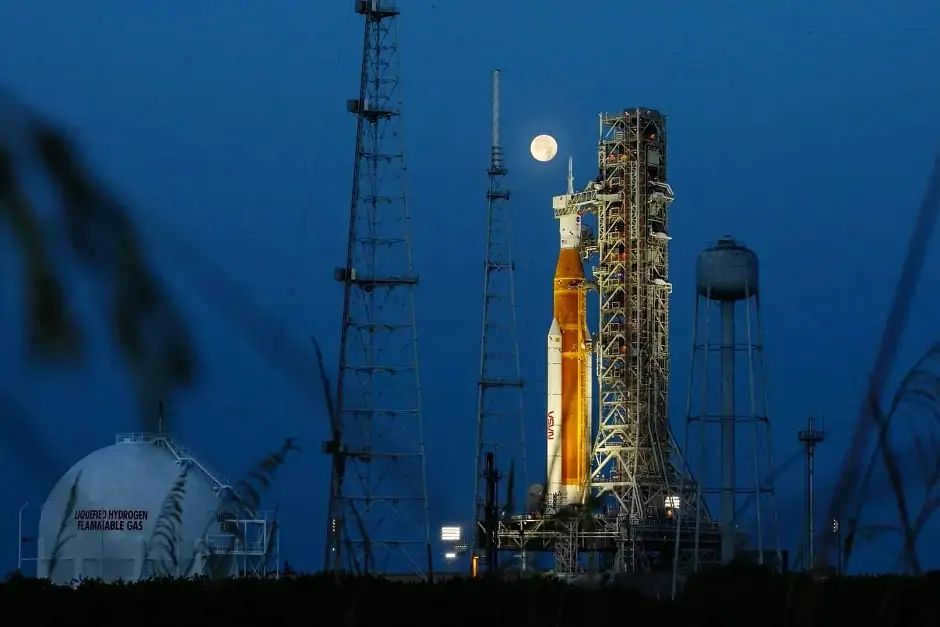
The Space Launch System (SLS) is a type of rocket used for launching spacecraft into space.
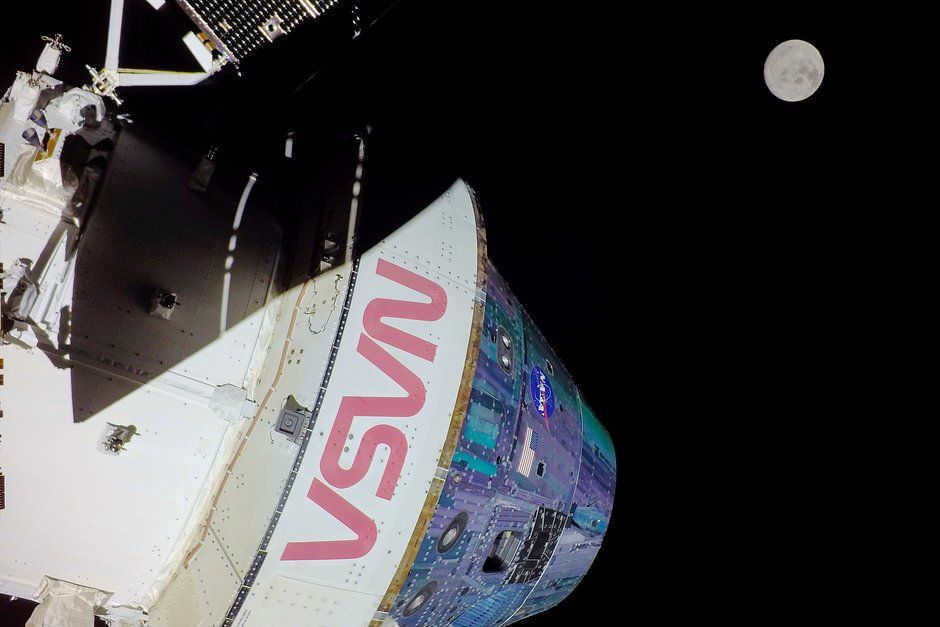
Artemis 1, which took place in November-December 2022, saw the launch of the SLS and Orion spacecraft without any crew members on board. The mission involved sending the spacecraft into a deep polar lunar orbit, where it remained for six days before returning to Earth. The entire mission lasted just over 25 days.
The Artemis program is set to continue until 2025.
Artemis 2, which is scheduled for 2024, will be the first mission with a crew on board. This will be followed by Artemis 3, which aims to land humans on the lunar surface between 2025 and 2026. Artemis 4 is planned to dock with the Lunar Gateway by 2027, with annual landings on the moon to follow.
NASA has already identified 13 potential regions for future astronaut landings. These include the Faustini Crater site and an elevated area near Shackleton Crater. All of these locations are located near the South Pole of the moon and offer multiple potential landing sites.
The estimated cost of the Artemis program is over $93 billion by 2025. NASA will spend $4 billion on each of the first four missions.
In 2020, NASA created the international “Artemis Accords” which outline ten principles for the development and exploitation of the moon. Over 20 countries, including the United States, have signed the agreement. It includes the establishment of “safe zones” around future lunar bases, the sharing of scientific data, and the registration of spacecraft on the moon.
NASA has chosen the team for the second Artemis mission. Christina Couch will become the first American woman to orbit the moon, while Victor Glover will be the first African-American. Reid Wiseman and Jeremy Hansen from the Canadian Space Agency will also be part of the team.
Constructing a lunar station necessitates a variety of energy resources. To extract these resources from the lunar regolith, it is crucial to establish facilities that also require a means of being supplied. The continuous supply is intended to be organized without relying on costly rechargeable batteries.
Ben-Gurion University has unveiled a proposal that involves gathering solar radiation through photovoltaic battery systems positioned along the lunar latitude near the poles. The design takes the shape of a ring, with the majority of it constantly exposed to sunlight.
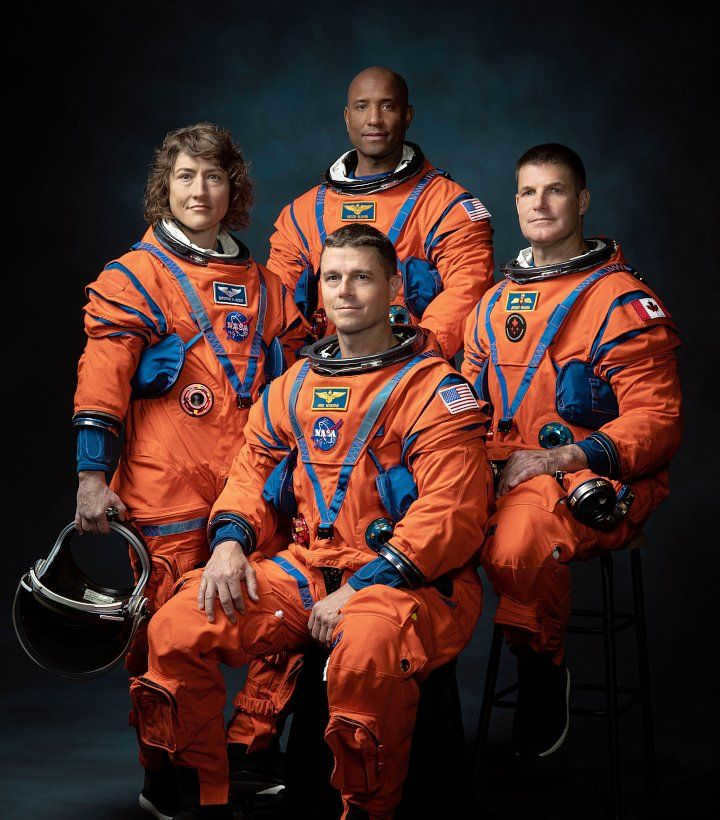
NASA is open to revising its current plan for lunar colonies and considering nuclear power as an alternative to solar power. This shift is motivated by the fact that the project’s cost-to-energy ratio is a hundred times lower than that of solar panels with batteries and six times lower than that of nuclear reactors.
A research camp on the moon can be constructed using lunar soil, with bricks made from this material using a 3D printer to reduce costs. Through compression testing, it has been determined that these lunar bricks can withstand the weight of load-bearing structures as long as the optimal sintering temperature is maintained.
Another possibility for establishing colonies is to utilize the moon’s caves. NASA has discovered caves on the moon that have a comfortable temperature of around 17 degrees Celsius, making them suitable for human habitation. These caves, which were first observed in 2009, can provide protection from solar radiation, meteorites, and cosmic rays.
Chinese astronauts, also known as taikonauts, have set a goal to touch down on the lunar surface by the year 2030. Their ultimate vision is to establish the International Lunar Research Station (ILRS), a habitable base where scientists from various nations can conduct groundbreaking lunar research. In a significant development, China and Russia signed an agreement in 2021, solidifying their collaboration in this ambitious venture. Furthermore, Venezuela has recently declared its intention to join this pioneering program.
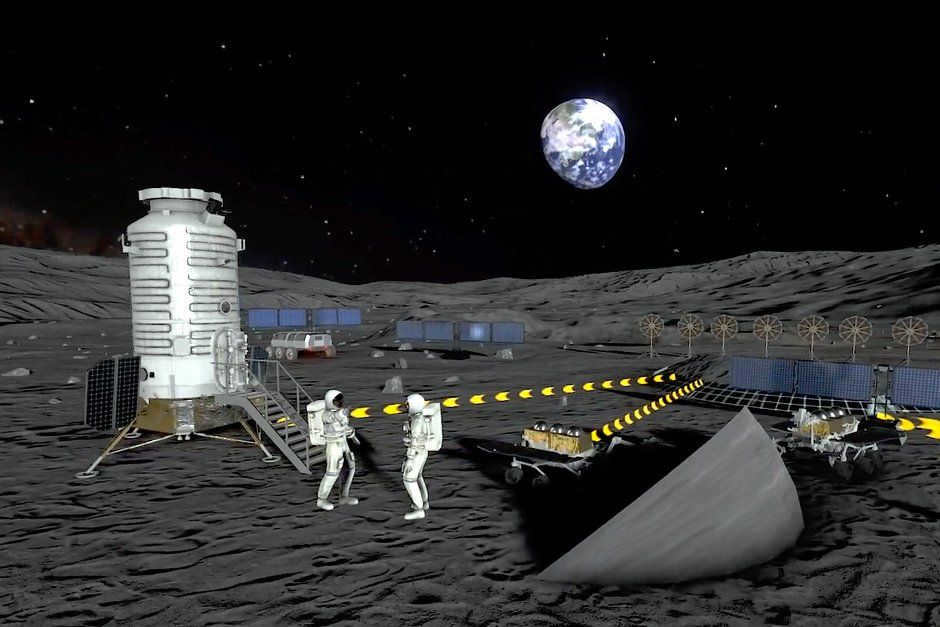
There are several missions scheduled between 2031 and 2035. ILRS-1 will focus on establishing a command center, energy supply, and communication infrastructure. ILRS-2 aims to develop infrastructure for lunar research, including the exploration of geological profiles, lava tubes, and sample collection. ILRS-3 will focus on the development and testing of lunar resource utilization technologies. ILRS-4 will involve biomedical experiments and the collection and return of samples to Earth. ILRS-5 aims to establish infrastructure for astronomy and Earth observation from the moon’s surface.
Taikonauts are planning to make a lunar landing.
The station is aiming to acquire a leaping robot and multiple lunar rovers for research and technical purposes. Additionally, the concept of constructing buildings on the Moon is under consideration, as these structures would provide a solution for prolonged astronaut habitation. The potential utilization of 3D printing for constructing these buildings is also being explored.
The ILRS project is comprised of the Chang’e missions, which aim to explore and prepare for the main phases. There are a total of eight missions planned, organized into four phases of increasing technical complexity. Three of these missions have already been completed, and the fourth phase will consist of the Chang’e-6, Chang’e-7, and Chang’e-8 missions. The ultimate goal of this phase is to establish a robotic science station at the Moon’s South Pole. The coordination of the Chang’e-7 and subsequent missions will be done in conjunction with Roscosmos’ Luna-26 and Luna-27 missions.
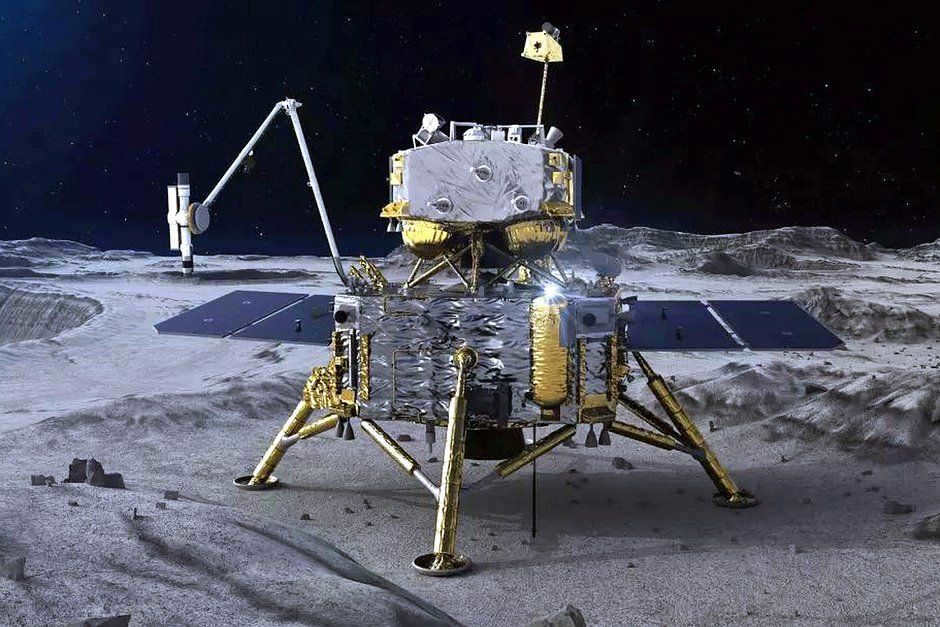
Up to this point, the Chinese National Space Administration (CNSA) has accomplished three stages of the Chang’e program. The initial phase, which involved entering lunar orbit, was carried out by Chang’e-1 in 2007 and Chang’e-2 in 2010. The second phase consisted of gathering Chang’e-5 samples on the visible side of the Moon and subsequently sending them back to Earth.
The resulting lunar soil samples have yielded numerous discoveries. The analysis revealed that the soil contained 32 glass beads comprised of rock and mineral fragments. Traces of water were detected within them, albeit in negligible amounts. However, the soil could potentially contain trillions of such beads. Pyroclastic beads may serve as a significant water source, but the issue of water extraction needs to be addressed. In theory, this could be achieved through heating.
A recent study analyzing regolith from the Ocean of Storms region has revealed that the water content in the area is quite low, measuring only 28 parts per million. This finding suggests that most of the moisture formation on the Moon occurs internally, rather than being brought in by the solar wind.
Interestingly, lunar soil has shown potential for an alternative use as fuel. Scientists from Nanjing University have developed technology to convert it into a usable fuel source. Analysis of samples from the “Chang’e-5” mission has revealed a high concentration of iron and titanium in the regolith, making it a promising catalyst for synthesizing fuel. Future lunar missions are expected to test this system.
The upcoming launch of “Chang’e” in May 2024 will provide another opportunity to collect new soil samples from the satellite. Once the mission is complete, the spacecraft will be transported to the far side of the Moon along with the Magpie Bridge 2 transponder.
Explore the world with a large and detailed satellite map that showcases continents, seas, oceans, countries, cities, streets, and their boundaries. This online map in Russian offers real-time and high-resolution satellite images, allowing you to easily navigate and discover specific locations on the global map.
Yandex.Maps Satellite Map
Displayed below is a top-notch satellite map of Russia in the “Hybrid” view. This satellite map provides a highly detailed and high-resolution representation of cities, streets, and house numbers.
When it comes to the territory of Russia, we highly recommend utilizing the Yandex.Maps service due to its unparalleled level of updated data frequency and detail, which surpasses that of other services, including those from foreign providers. We firmly believe that Yandex.Maps stands as the premier choice for satellite maps in Russia and worldwide.
Google Maps Satellite Map
Here is an interactive satellite map of the world with borders provided by Google Maps. The satellite imagery available on Google Maps allows users to explore high-resolution photos of countries and cities.
Google Maps is the dominant mapping service globally, making it the ideal choice for displaying maps of various countries worldwide. Take advantage of the powerful tools offered by Google Maps to enhance your map-viewing experience.
“Bing.Maps” is a mapping service provided by Microsoft, previously known as “MSN Virtual Earth” and “Windows Live Maps”. With Bing’s satellite map display, you can easily locate any city of your choice on any continent or country.
To quickly find a specific street or house using “Bing.Maps”, simply visit the service using the link provided below, enter the desired address in the search bar, and enjoy the detailed satellite view.
Kindly note that all the satellite maps mentioned above are interactive, allowing you to expand them to full screen or access them directly on Google, Bing, and Yandex services.
Satellite map services
Here are some links to satellite map services that you can access directly from their official websites and utilize all the available features:
- Yandex.Maps service.
Open in Yandex Maps. - Google Maps service.
Open in Google Maps. - Bing.Maps service.
Open in Bing Maps. - 360earthview service (provides 3D maps).
Open in 360earthview Maps. - MapQuest service.
Open in MapQuest Maps. - MapTiler service.
Open in MapTiler Maps. - EOSDIS Worldview service (a NASA project that allows real-time monitoring of Earth).
Open in EOSDIS Worldview Maps.
It is currently not possible for an average user to view the world map in real time from a satellite. As a result, we can only rely on periodically updated maps provided by Yandex, Google, and Bing.
Other articles:
Comments: 15
In my opinion, real time viewing is not available. Additionally, I am certain that our street no longer has a house, but it still appears on the map.
If you want to view your street via satellite, you would need to adjust the satellite’s direction, but I am unsure how to do so.
The maps have not been updated in 2 years, which is disappointing. This issue is not only limited to your website, but also affects the public cadastral.gosregister. What are they trying to hide?
In my local area, the maps are approximately 5 years outdated. The previous structures have been demolished and new stores, pharmacies, and supermarkets have been constructed, but the outdated buildings are still depicted on the maps.
Only Google Maps provides relatively current information, while the others are about 5 years behind…
If you have the know-how, you can even view live satellite footage from any laptop and even capture the video.
Cancel your reply
By clicking the “Post a comment” button, you are giving your consent to the processing of your personal information.
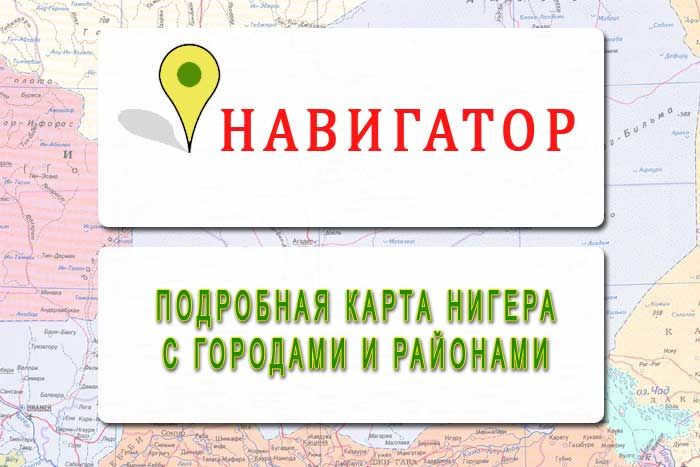 Detailed map of Niger including cities
Detailed map of Niger including cities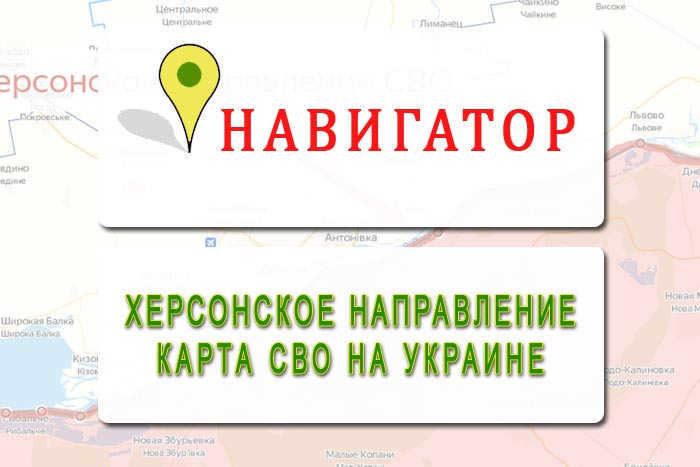 Map of the South-Western Operational (SWO) area in the Kherson direction of Ukraine and Russia as of August 18, 2023
Map of the South-Western Operational (SWO) area in the Kherson direction of Ukraine and Russia as of August 18, 2023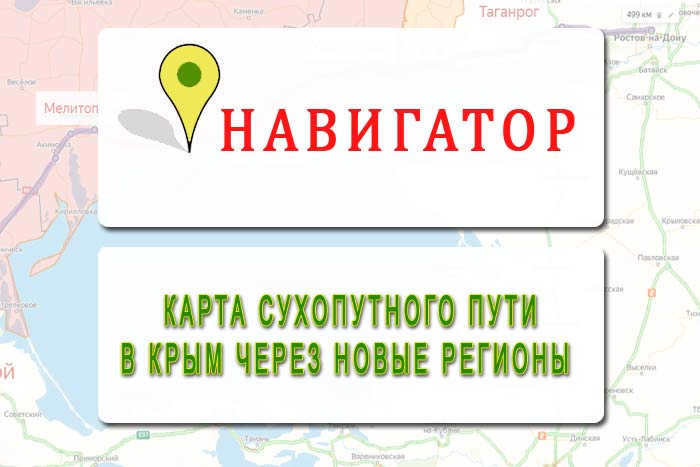 Map of the land route to Crimea through newly established regions
Map of the land route to Crimea through newly established regions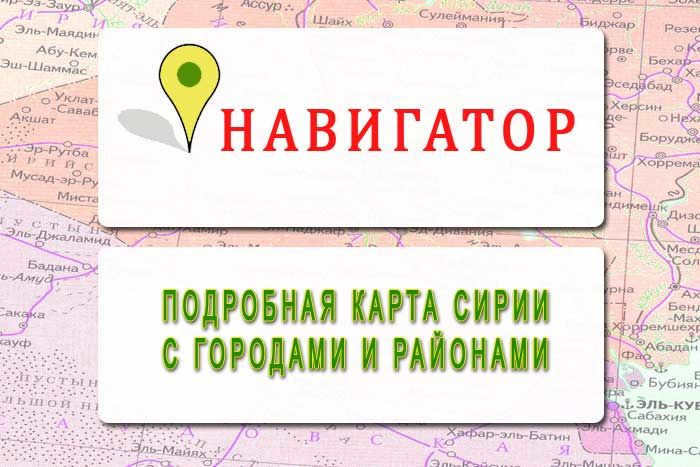 Detailed map of Syria with cities, presented in Russian
Detailed map of Syria with cities, presented in Russian- Detailed map of Niger with cities, available in Russian
- Detailed map of Saudi Arabia with cities, available in Russian
- Detailed map of Iraq with cities, available in Russian
- Detailed map of Pakistan with cities, available in Russian
- Detailed map of Afghanistan with cities, available in Russian
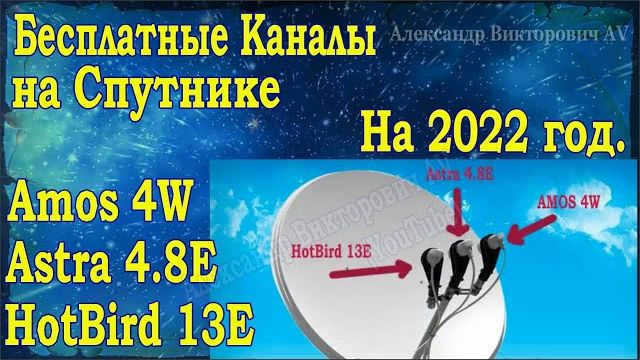
A compilation of Russian satellites and their corresponding channels
- Astra 5B 31.5E: KU band 5 channel, 8 channel, Domashniy International, NTV Mir, Perets, Ren TV, Shanson, STS, TNT, TNT Music, TV Center.
- Express AM7 40E.
- Express AM33 96.5E.
- ABS 2A 75E.
- Yamal 401 90E.
- Express AT1 56E.
- Horizons 2/Intelsat 15 85E.
- Yamal 601 49E.
Which satellite is suitable for watching Russian channels?
If you are looking to watch Russian channels, the Eutelsat 36B / Express AMU1 satellite at the 36°E position is worth considering. This satellite broadcasts a wide range of TV channels in Russian, English, and other languages. Many of these channels are encrypted and can be accessed through satellite broadcasting providers such as NTV Plus (NTV+) and Tricolor.
What satellite offers the largest selection of free channels?
The Hot Bird satellite is highly favored by users because it provides access to a wide range of free satellite TV channels. This includes approximately one hundred Arabic and Italian channels, as well as around twenty Russian channels. Additionally, viewers can enjoy English, German, and channels from various other countries.
Why isn’t RTR visible on satellite?
RTR Planeta and Russia 24, two Russian TV channels, have recently reappeared on the Eutelsat Hot Bird satellite (13°E). They are currently broadcasting in SD-quality with the MPEG-2 codec in an uncoded format. However, there is no information available about the TV-Center channel, which was also removed from the satellite. The decision to resume broadcasting on the satellite remains unclear. These channels were initially removed from the Hot Bird 13°E satellite on June 7 due to the imposition of sanctions on Russian state media. The President of the European Council, Charles Michel, announced these sanctions via Twitter at the end of May this year.
The Yamal 401 satellite at 90.0°E is likely to have the largest number of available channels in Russia. Its transponders cover almost the entire Russian territory, except for Chukotka and the eastern part of Yakutia.
Which satellite is the home of the first Russian channel?
The first Russian channel is broadcasted on the Eutelsat Hot Bird 13B/C/E satellite at 13°E. This version of the channel is authorized for international broadcast outside of Russia. Eutelsat Hot Bird 13B/C/E, 13°E.
What are the available channels on the HotBird satellite?
Here is a list of the channels available on the HotBird satellite:
| 2793 | Eleven Sports 1 4K | Eleven Sports 1 4K |
| 2792 | PLAYBOY TV HD | PLAYBOY TV HD |
| 2206 | CANAL+ 4K ULTRA HD | CANAL+ 4K ULTRA HD |
What happened to the Russia 24 channel on satellite?
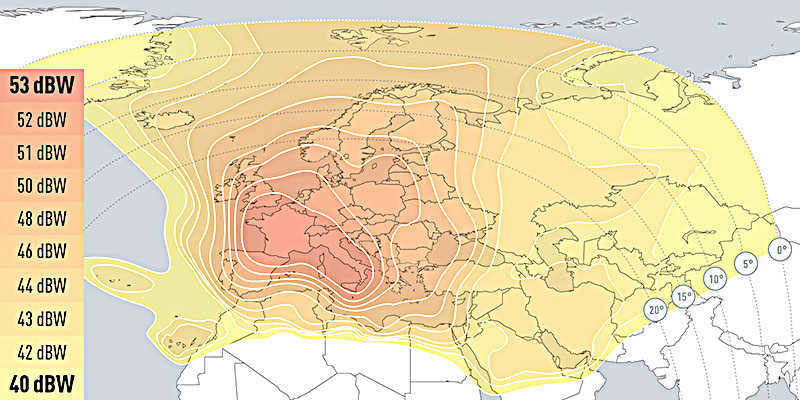
The transmission of RTR-Planeta (the international version of Russia 1) and Rossiya-24 TV channels from the HotBird satellite at 13 degrees East has ceased. Previously, these channels were broadcasted on the frequency 11034 V, but now there is a test map displayed.
- It is worth noting that HotBird 13 deg.
- E is widely regarded as the most popular satellite in Europe.
- In addition, it covers North Africa and West Asia.
- The HotBird satellite, which is operated by the French global satellite operator Eutelsat, has traditionally been utilized by Russian TV channels to transmit their international versions to Europe.
As mentioned previously, starting from June 3, 2022, according to the official announcement from the European Union, “the broadcasting of three additional Russian state TV channels – Rossiya RTR/RTR Planeta, Rossiya 24/Russia 24, and TV Centre International – will be suspended within the European Union.”
The European Union claims that these channels are being utilized by the Russian government as “instruments for manipulating information and disseminating untruths about *** to Ukraine, which includes propaganda, with the intention of destabilizing neighboring countries of Russia, as well as the European Union and its member states.”
Remember that the TV channels “Russia-1” (known as “RTR-Planeta” internationally) and “Russia-24” are part of the Federal State Unitary Enterprise “All-Russian State Television and Radio Broadcasting Company” (VGTRK). “First Channel – Europe” and “NTV Mir” continue to be broadcasted from the HotBird satellite, as no sanctions have been imposed on them by the European Union. Previously, Russian state TV channels RT Simonyan, which catered to foreign audiences in foreign languages, ceased operations on the HotBird satellite. Share your thoughts on our articles and engage with us on our social media platforms. We value your opinion.
What are your thoughts on this matter? Feel free to leave your comments on our articles and engage with us on social media. We appreciate hearing from you.
Who is the owner of HotBird satellite?
The current version of this page has not yet been verified by experienced contributors and may differ significantly from the version verified on June 6, 2018; 21 edits required,
| The information in this article or some of its sections is outdated, you can assist the project by updating it and removing this template afterwards. |
A model of the first satellite in the Hot Bird series, Hot Bird 1. The actual satellite has only one reflector, instead of the two shown on the model. Hot Bird ( Hot Bird ) is a series of artificial Earth satellites located at different times in the 13°E orbital position.
Which satellite is used by Telekarta for broadcasting?
Currently, Telekarta satellite TV channels are being broadcasted through the Russian satellite Express-80, which is owned by FSUE “Space Communications”.
How many satellites does Russia have?
This page’s current version has not been verified by experienced users and may differ significantly from the version verified on December 18, 2019. Russia’s orbital satellite constellation, which consists of socio-economic, scientific, and dual-use satellites as of January 2022, consists of 102 spacecraft. 35 revisions are required.
What is the current name of the Sirius satellite?
The information on this page is still awaiting verification from knowledgeable individuals and may vary considerably from the version that was verified on October 26, 2019; it will require 14 revisions.
| November 18, 2007 (November 17, 2007 UTC) |
| 4385 kg |
| Lockheed Martin Commercial Space Systems |
| A2100AX |
| Proton-M / Briz-M |
| Briz-M |
| 2007-057A |
| 15 years |
| 2 (Ka), 52 (Ku) |
| 2°E |
| 4.8° E. |
| List of Television Satellites |
Astra 4A (also known as Sirius 4) is a satellite belonging to SES S.A. This satellite is specifically designed to offer services such as television broadcasting, radio broadcasting, Internet access, and data transmission to the countries in Northern and Eastern Europe as well as Africa.
- The launch of Astra 4A took place on November 18, 2007 (November 17, 2007 UTC) at the Baikonur Cosmodrome, using a Proton-M / Briz-M launch vehicle.
- Lockheed Martin Commercial Space Systems manufactured this satellite based on the A2100AX platform, and it serves as a replacement for the Sirius 2 satellite.
- The payload of Astra 4A consists of 52 Ku-band transponders and 2 Ka-band transponders.
Out of these 46 transponders operating in the Ku-band frequency, their primary purpose is broadcasting to audiences in Northern and Eastern Europe as well as Russia. Additionally, there is one transponder operating in the Ka-band frequency specifically for interactive broadcasting services in Scandinavia and the Baltic States. Furthermore, there are six transponders in the Ku-band frequency and one in the Ka-band frequency that are dedicated to providing communication services between European and African countries. It is worth noting that on June 26, 2010, the Sirius 4 satellite underwent a name change and is now known as Astra 4A.
What is the satellite position at 90 degrees?
The satellite Yamal 401 is positioned at 90 degrees East. It is also known as Yamal-401 and is located at 90 degrees East.
Which satellite is used by Telecart?
Currently, all TV channels of Telecart satellite television are being broadcasted through the Russian satellite “Express-80”, which is owned by FSUE “Space Communications”.
Which satellite does NTV broadcast on in Ukraine?
The NTV Plus Ukraine service is provided by NTV-PLUS, the leading Russian satellite TV company in the pay-TV market for over 14 years. The company broadcasts its channels to most of Russia and Ukraine using the Eutelsat W4/W7 and Bonum 1 satellites.
- NTV-PLUS Ukraine offers over 80 channels in digital quality, including high-definition and Dolby Digital 5.1 sound channels.
- The NTV-PLUS Ukraine channel lineup includes a variety of genres.
- Among the extensive list of channels, viewers can find movie channels, educational channels, sports and news channels, as well as music channels, children’s channels, and more.
NTV-PLUS TV company is a renowned authority in the pay satellite television industry, shaping modern standards for high-quality television in both content and technical solutions. Here’s how you can get connected:
- To subscribe to the NTV-Plus satellite TV system in Ukraine, you can choose between two types of connections: Basic+ (Basic-Advanced+) or the economy offer. To get started, a payment of 3000 rubles is required.
- You can make the payment at a bank branch.
- The payment amount is 3000 rubles.
- The package includes a minimum advance payment of 2400 rubles.
* (this amount will be credited to your account) – activation fee: 600 rubles. * * * – payment in UAH at the exchange rate of the National Bank of Ukraine on the day of payment. Connection to the “NTV-Plus Ukraine” package (special economy offer, 26 channels): To join the “NTV-Plus” satellite television system in Ukraine, you will need to make a payment of 855 rubles.
at a bank branch. The payment of 855 rubles includes: – minimum prepayment: 255 rubles. * (this amount will be added to your account) – connection cost: 600 rubles. * * * – payment in UAH at the exchange rate of the National Bank of Ukraine on the day of payment.2. After making the payment, please visit us to sign the contract and receive a payment receipt. Bring your passport and identification number with you.3. Purchase an NTV-PLUS Ukraine access card for 99 UAH.4.
What is the number of free channels on NTV PLUS?
Exciting news! NTV PLUS online TV now offers access to all Russian channels via the Internet, regardless of your subscription status. Simply sign up and enjoy around 20 channels for free.
Experience high-quality visuals on First Channel HD, Russia 1 HD, and NTV HD. Support your favorite teams on MATCH TV. Dive into entertainment shows, movies, and series on STS and TNT. Create a cozy atmosphere with Domashniy. Sing and dance along with Muz. Your beloved movies and shows are available to watch at home, in the countryside, on the go, during your lunch break, or any other time.
Always. Everywhere. On any device. All you need is an Internet connection. Sit back and enjoy the show!
7.3M
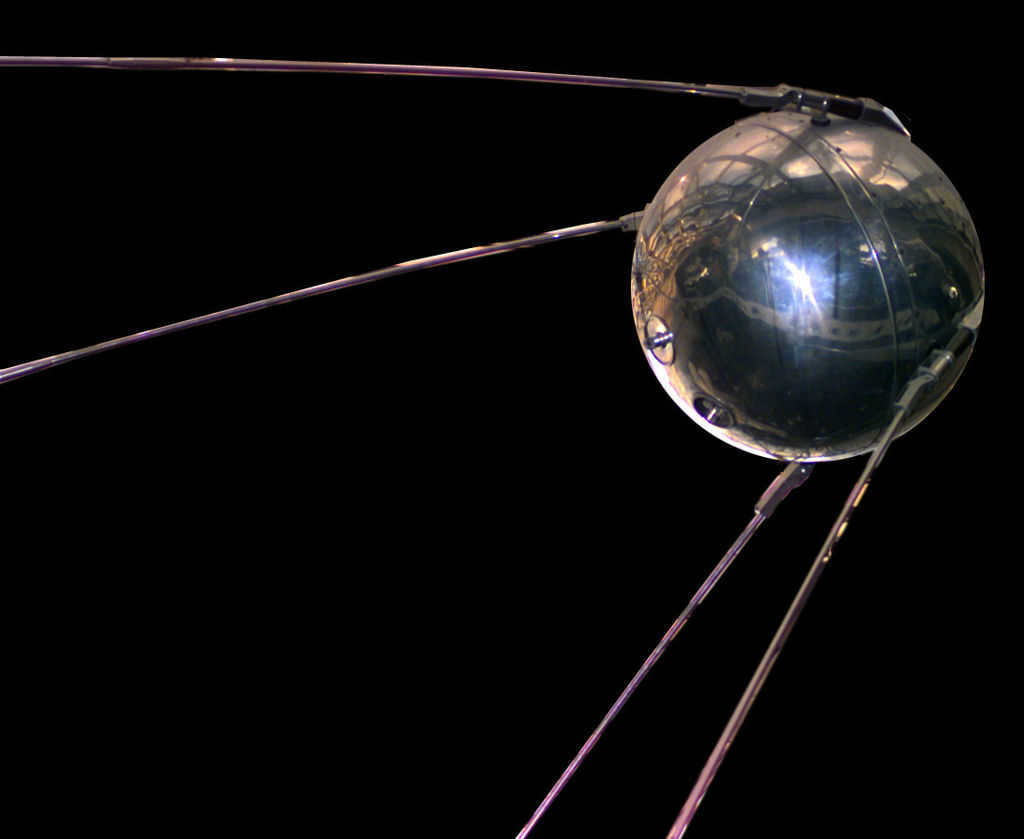
"Sputnik-1" – the initial man-made satellite of the EarthSputnik-1 is a spacecraft launched by the Soviet Union into orbit on October 4, 1957 (during the International Geophysical Year). The code name for the satellite is "PS-1" ("Simple Sputnik-1"). The launch took place from the 5th research range of the USSR Ministry of Defense "Tyura-Tam" (which later received the public name of Baikonur Cosmodrome) on a Sputnik launch vehicle based on the R-7 intercontinental ballistic missile.
The creation of an artificial Earth satellite was led by S. P. Korolev, the founder of practical cosmonautics. P. Korolev, along with scientists M. V. Keldysh, M. K. Tikhonravov, M. S. Ryazansky, O. G. Ivanovsky, N. S. Lidorenko, G. Y. Maksimov, V. I. Lappo, K. I. Gringauz, B. S. Chekunov, A. V. Bukhtiyarov, and many others, worked on developing the artificial satellite.
The launch of Sputnik-1 marks the beginning of the space age for humanity, and in Russia, it is celebrated annually as a significant day for the Space Forces. A plain on Pluto’s surface has been named after the first artificial Earth satellite (the name was officially approved by the International Astronomical Union on August 8, 2017).
History of the creation process
Prior to the launch of the inaugural satellite, a lengthy collaboration among numerous scientists and engineers was carried out. Konstantin Eduardovich Tsiolkovsky was one of the early pioneers in the development of reactive motion theory, as evidenced by his articles. Tsiolkovsky not only envisioned liquid-fueled rockets, but also predicted the advent of artificial satellites and orbital stations. He actively promoted his ideas, leaving behind a legacy of followers. The design of the satellite was spearheaded by Mikhail Klavdievich Tikhonravov and his team, while Sergei Pavlovich Korolev played a pivotal role in coordinating the satellite’s development and eventual launch.
The first organization in the USSR dedicated to research and development in the field of rocket technology was established on March 1, 1921. Originally known as the “Laboratory for Development of Inventions of N. I. Tikhomirov,” it was later renamed the Gas Dynamic Laboratory (GDL) in 1928. The initial focus of the laboratory was on the creation of solid-fuel rocket shells and boosters for airplanes. However, in 1929, under the leadership of Valentin Pavlovich Glushko, GDL shifted its attention to the development and testing of the first domestically produced liquid-propellant rocket engines.
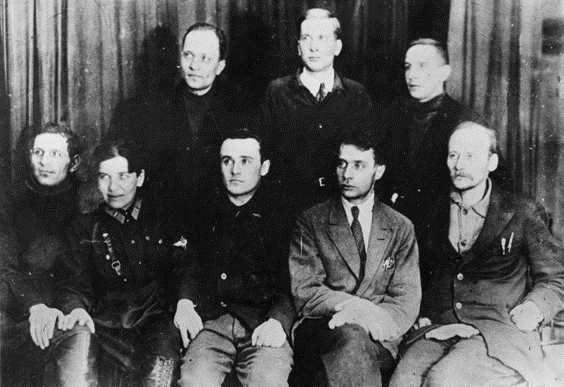
Moscow Jet Propulsion Research Group (MosGIRD)
The Group for the Study of Jet Propulsion (GIRD) was formed in the fall of 1931 as a scientific and experimental team under Osoaviakhim. Its establishment dates back to September 15, 1931, in Moscow, followed by November 13, 1931, in Leningrad, and later in Baku, Tiflis, Arkhangelsk, and other cities.
LengIRD was established with the collaboration of Yakov Isidorovich Perelman, Nikolai Alekseevich Rynin, Vladimir Vasilyevich Razumov, and other individuals. By 1932, the group had grown to include 400 members. They engaged in the development of innovative rocket designs, the formulation of theoretical lectures on rocket engineering, and the conduction of experiments to investigate the impact of high stresses on animals. This work was done in partnership with experts from GDL.
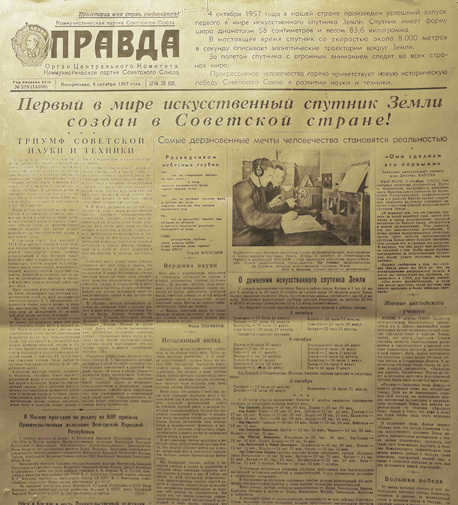
The Importance of the Journey
In accordance with its obligations to the International Geophysical Year, the Soviet Union officially launched Sputnik-1 and Sputnik-2. The transmission of radio waves by Sputnik-1 provided an opportunity to explore the higher levels of the ionosphere. Prior to the launch of the first satellite, researchers could only observe the reflection of radio waves from the ionospheric regions located below the zone of maximum ionization of the ionospheric layers.
The satellite held significant political significance. The entire world witnessed its journey, and its transmitted signal could be received by any radio enthusiast worldwide. The magazine “Radio” published detailed instructions in advance on how to capture signals from outer space. This contradicted the belief that the Soviet Union lagged behind technologically. The launch of the initial satellite dealt a major blow to the reputation of the United States. According to the United Press, “Ninety percent of the discussion about artificial satellites came from the United States. However, it turned out that 100 percent of the progress came from Russia…”. In the American media, Sputnik 1 is often referred to as the “Red Moon”. Michigan Governor Mennen Williams expressed criticism towards Dwight Eisenhower through a poetic form. The first stanza went as follows, “Little Sputnik, soaring high / With a hum originating from Moscow, / You proclaim to the world that the sky belongs to the Communists, / While Uncle Sam slumbers.”
On February 1, 1958, Wernher von Braun’s team successfully launched the first artificial satellite, Explorer 1, in the United States. Despite carrying 4.5 kg of scientific equipment, the satellite’s overall mass was only 13.37 kg, which was 6 times lighter than PS-1. This impressive weight reduction was achieved through the implementation of low-power transmitters and the use of transistors, resulting in lighter batteries. Additionally, it was thanks to this American satellite that the Earth’s radiation belt, also known as the Van Allen belt, was discovered.
Remembrance
In order to honor the inception of humanity’s journey into space in the early months of 1958, a contest was held to design a memorial. On October 4, 1964, the seventh anniversary of Sputnik-1’s launch, the 107-meter “Conquerors of Space” monument was unveiled on Prospekt Mira in Moscow.
